

Natchez
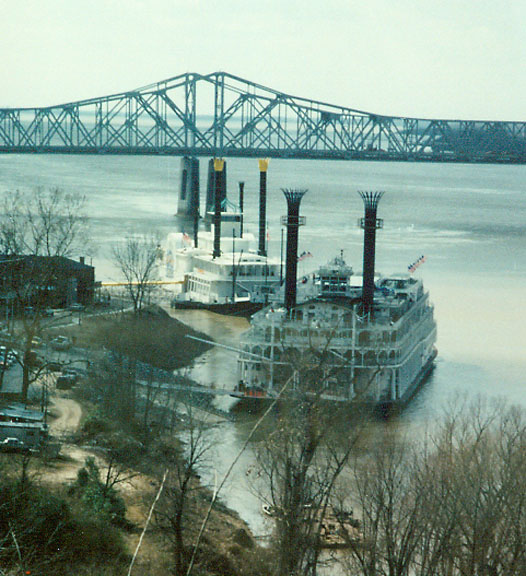
"Mississippi Queen" riverboat at the landing of
"Natchez under the hill"
(boat behind is the new one in town, the gambling establishment)
More Photos of the Delta Queen
Natchez (Mississippi), city, seat of Adams County, southwestern Mississippi, on the bluffs above the Mississippi River; incorporated 1803. It is a shipping and manufacturing center situated in an area where cattle are raised and cotton, timber, petroleum, and natural gas are produced. Major products include tires, paper, metal items, textiles, processed food, and chemicals. Tourism is also important to the city's economy.
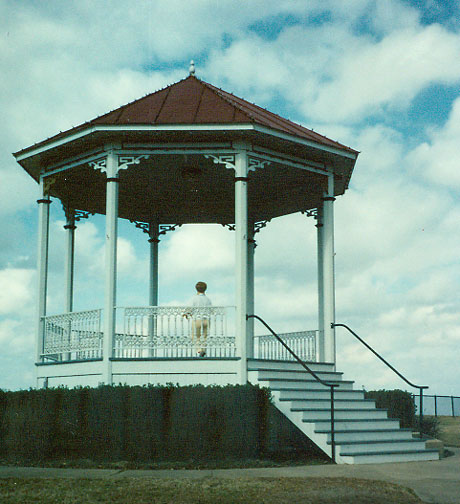
looking out from the hill
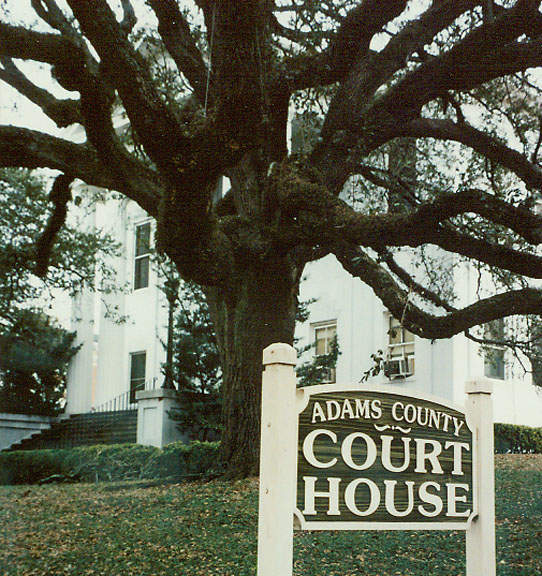
Adams County Courthouse
![]()
Natchez Trace

Trace Parkway, after an ice storm, February, 4 1996
Natchez Trace Parkway, a route between
Nashville, Tennessee, and Natchez, Mississippi
that roughly follows old Native American trails from the Ohio river to the
Mississippi river and West to Texas

Trace Parkway
The Natchez Trace experienced its heaviest use from 1785 to 1820 by the
“Kaintuck” boatmen that floated the Ohio and Miss. Rivers to markets in Natchez
and New Orleans. They sold their cargo and boats and began the trek back north
on foot to Nashville and points beyond.
![]()
Natchez People
Natchez (people), Native North American tribe of the Muskogean language family and of the Southeast culture area. The tribe once lived along the lower Mississippi River, near present-day Natchez, Mississippi. The Natchez were the largest and most unified tribe of the region, with some 5000 people in the mid-1600s.
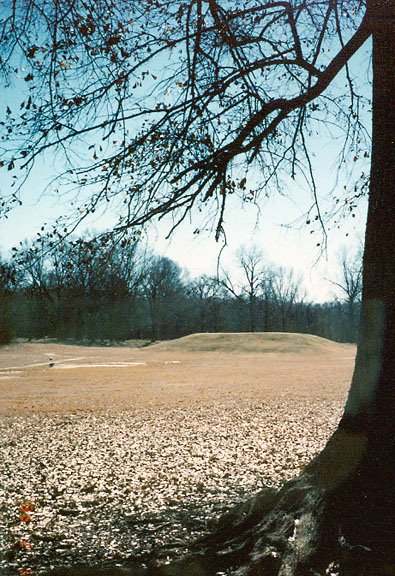
burial mound
The Natchez were well established in their villages between the Yazoo and Pearl rivers when the French set up a trading post in 1713. French-Natchez relations soon deteriorated, and war ensued. In 1729 the French, together with the Choctaw, drove the Natchez from the region. Some took refuge among the Creek, Cherokee, and Chickasaw; others were captured by the French and sold into slavery.
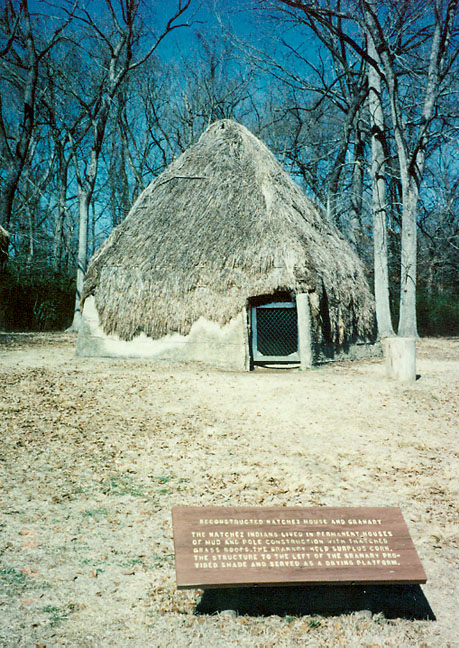
reconstructed Natchez house and granary
The Natchez were sun worshipers; they kept a perpetual fire burning in their temples. In their religion, their customs, and their dependence on the cultivation of maize for food, they were like the Creek, Choctaw, and other Gulf tribes. The Natchez, however, had rigid class distinctions, including a noble class of three ranks: Great Suns, Suns, and Honored Men. Unlike other chiefs, the Natchez Great Sun had autocratic powers over his subjects.
![]()
Natchez, the city
Natchez is the site of the Grand Village of the Natchez Indians, including burial mounds and a museum, and a number of fine antebellum homes. The French built Fort Rosalie on the site of a Natchez village here in 1716. Natchez was the capital of the territory of Mississippi (1798-1802) and the first state capital of Mississippi (1817-21).
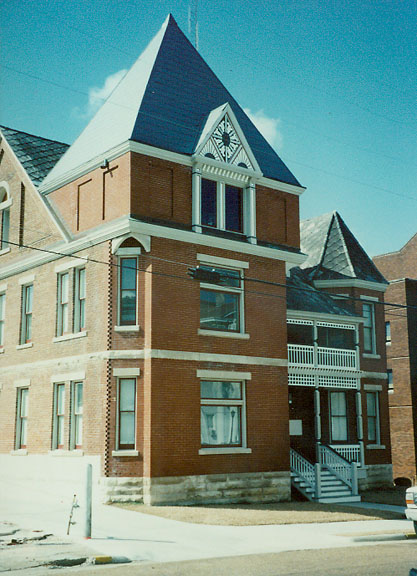
Natchez city's old jail
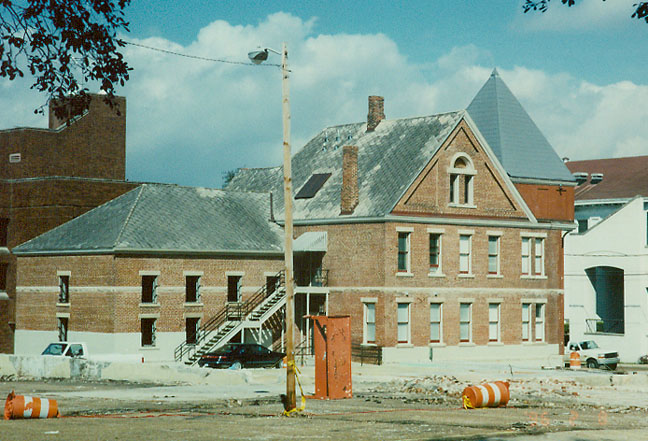
as seen from the side
The settlement grew because of its strategic position on the river and as the southern terminus of the Natchez Trace. Population 22,015 (1980); 19,460 (1990); 18,277 (1998 estimate).
Text from Microsoft Encarta
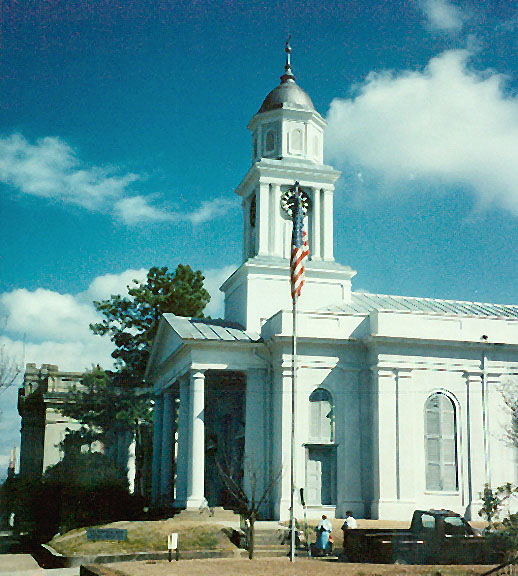
Presbyterian church
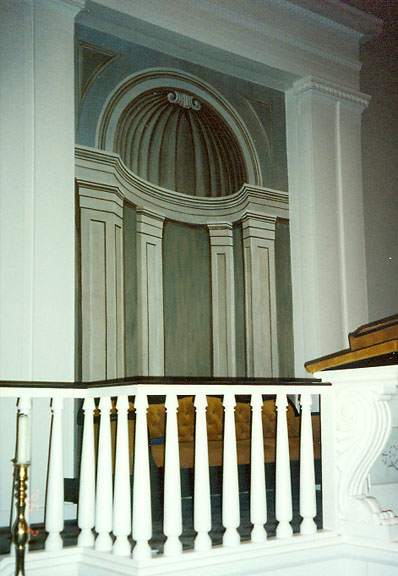
a trompe l'oeil effect, on the Presbyterian
church interior
(a flat wall painting made to look three dimensional)
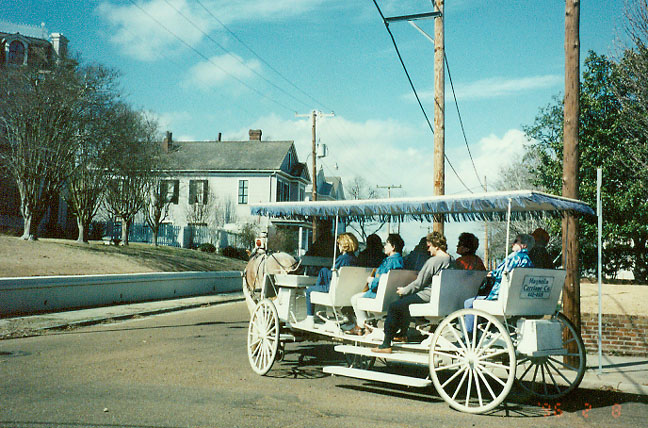
seeing the town
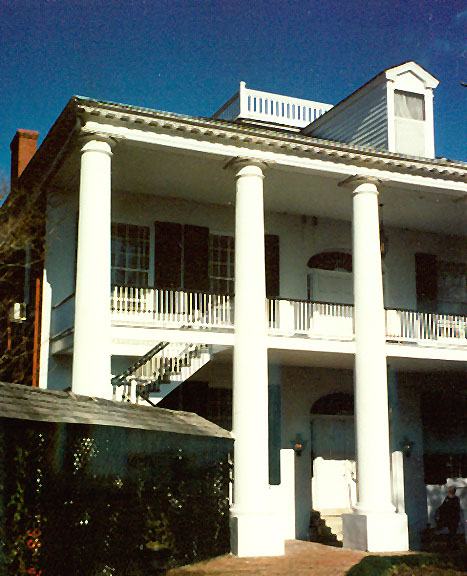
Rosalie

Melrose
The main house at Melrose Plantation designed by Jacob Byers c. 1849
![]()
Victorian homes
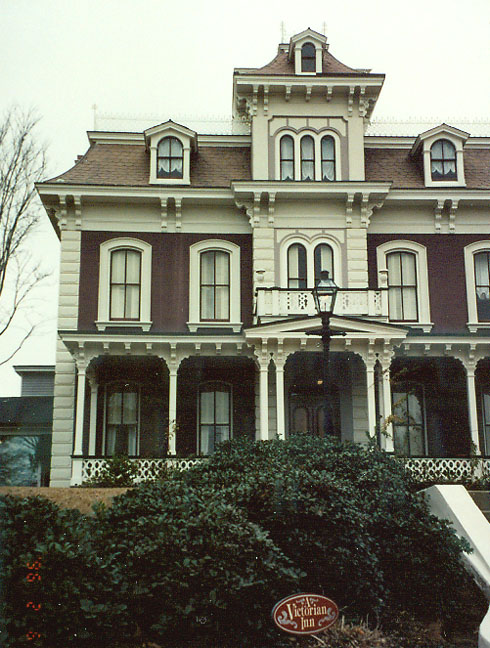
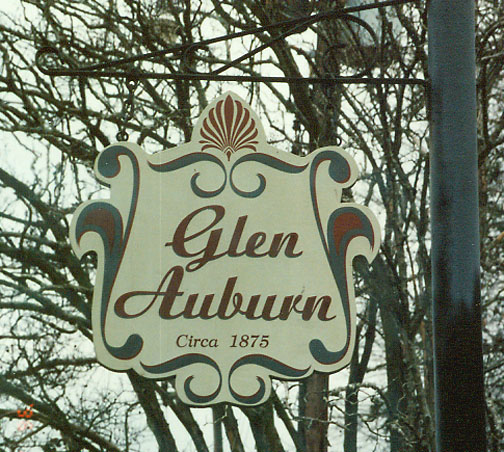

interior circular staircase
![]()
Antebellum Homes
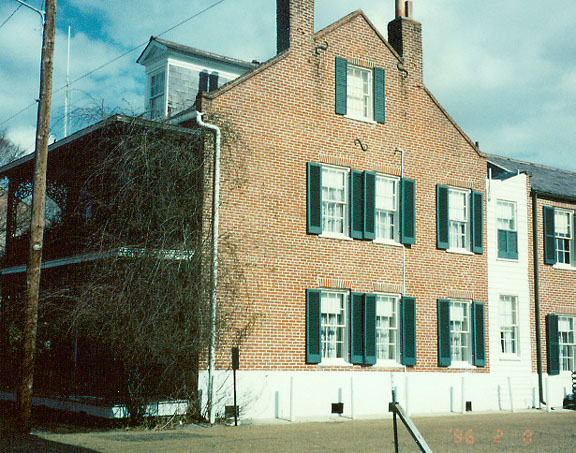
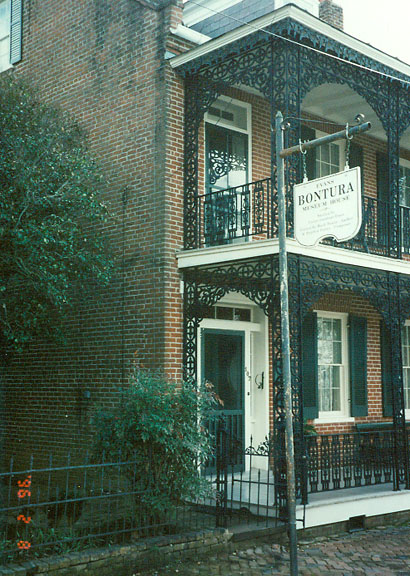
Bontura
ca. 1851. South Broadway. Built by Robert
Smith, a free African-American who ran a carriage service.
Subsequently operated as an inn by Portuguese merchant Jose Bontura.
Example of Greek Revival town house with unique arches in carriage house
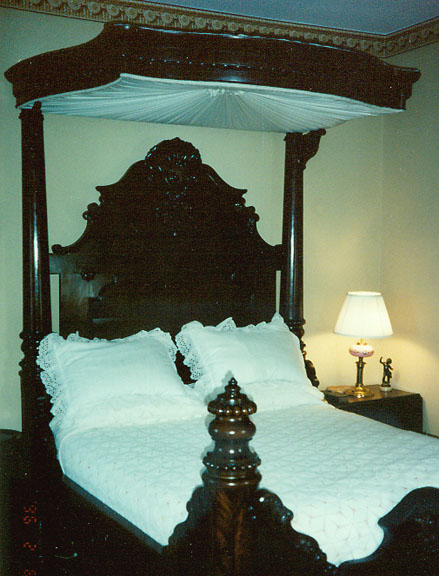
one of the inn's elegant bedrooms
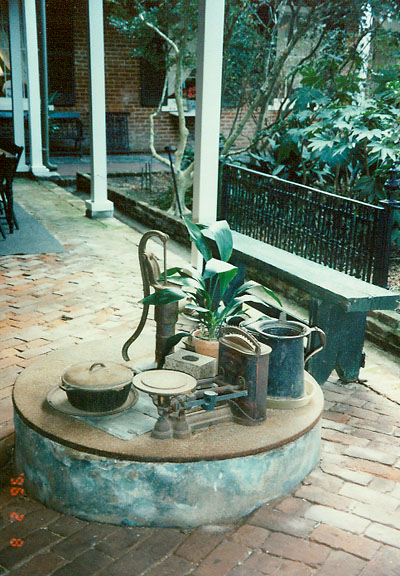
well in the courtyard
More Antebellum homes in Natchez
![]()
Jefferson College
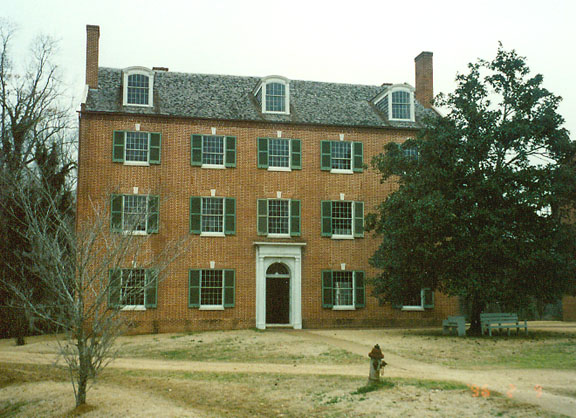
The first college established in Mississippi
was Jefferson College,
which opened near Natchez in 1811.
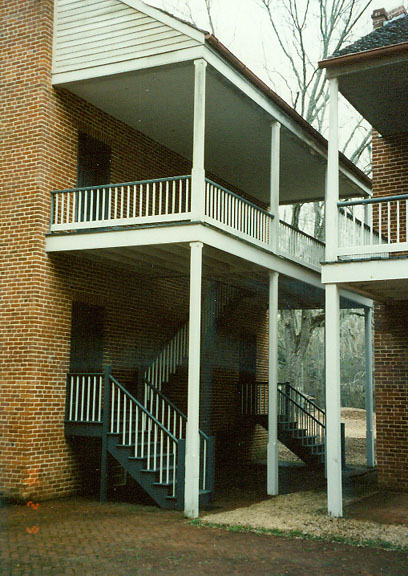
the dormitory
![]()
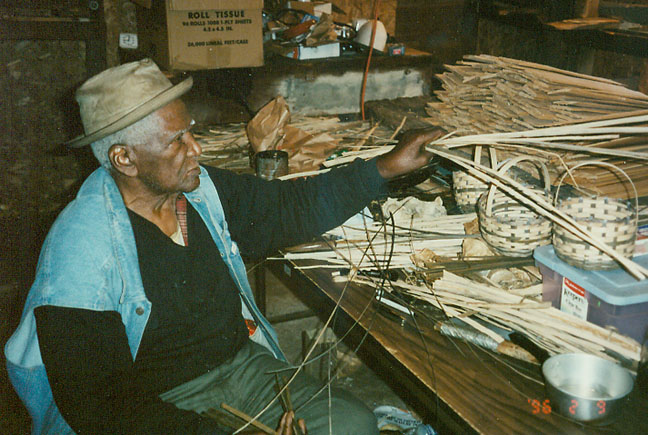
a basket maker
![]()
![]()